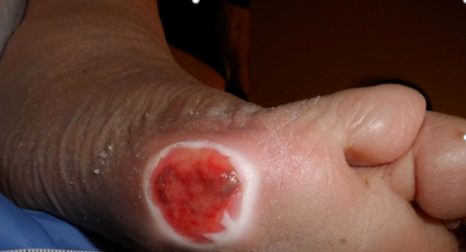One day hospital “pressure injury prevention” protocols will include maintaining (if possible) a reasonable mean arterial pressure (MAP) or diastolic blood pressure, among other strategies that might ACTUALLY prevent pressure injuries. There’s a reason they still happen. They still happen because we aren’t addressing the correct pathophysiologic mechanism. I am sure the ICU nurses out there know what I am talking about.
Check out the story of my son’s intraoperative pressure injuries and the powerful evidence that Stage 1 pressure injuries are actually “ischemia reperfusion” injuries!
Watch Pressure “Injuries” Form from the Inside Out on These YouTube Videos
(For more video content, please visit & follow my YouTube channel)

Dr. Fife is a world renowned wound care physician dedicated to improving patient outcomes through quality driven care. Please visit my blog at CarolineFifeMD.com and my Youtube channel at https://www.youtube.com/c/carolinefifemd/videos
The opinions, comments, and content expressed or implied in my statements are solely my own and do not necessarily reflect the position or views of Intellicure or any of the boards on which I serve.




Interesting videos. Hemodynamics of PI development are not well understood. Diastolic BP below 60 (particularly in the elderly) and the concept of hemodynamic instability were identified as a risk factors for PIs in the 1980s. Specific recommendations for prevention other than frequent repositioning and prevention of pressure points are not well described. Thanks for your work in this area. Hopefully, as risk assessment moves to EMRs, algorithms that include hemodynamics will better inform preventive measures. Expecting Intellicure will lead in this area.
Thank you for the comment Nancy! In fact, data are accumulating that it’s the lowest diastolic that matters even more than the mean arterial pressure. The next generation of pressure ulcer “prevention” protocols should be hemodynamic targets, not turning schedules.
Absolutely!!!! I 110% agree. In a critically ill patient with a mean arterial pressure less than 65mmHg on four pressors, their skin perfusion is terrible – of course we’ll see evidence of ischemic injury on areas where the weight of the body part is greater than the capillary bed can perfuse through. Thank you Dr. Fife – let’s make this go viral!!!
I’m a 38 yr old male diabetic. I developed a friction blister on my Achilles heel from ascites making it impossible to get on socks, so I wore my shoes barefoot. After about a week and a half I drained it and the noticed it was more than one blister over. It continues to drain so I (foolishly?) opened it up more. There was white macerated looking flesh underneath. The extent of the blister did not look that bad, a little deep, some dead stuff maybe. One week later and it seems the blister covered more surface area then previously thought and all the flesh underneath is white, possible necrotic tissue. Does this sound like DTI evolving into a pressure ulcer? Should I trim away the dead blister skin from the rest to let the macerated skin dry out a little? Wish I could post the pictures of it.